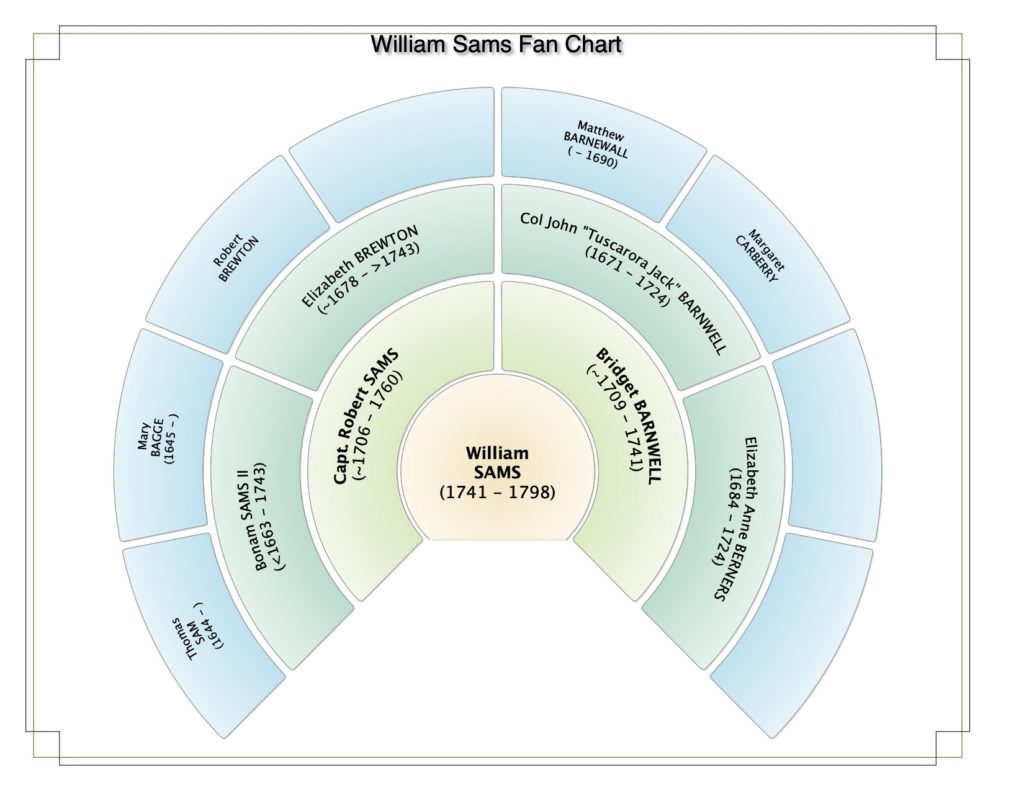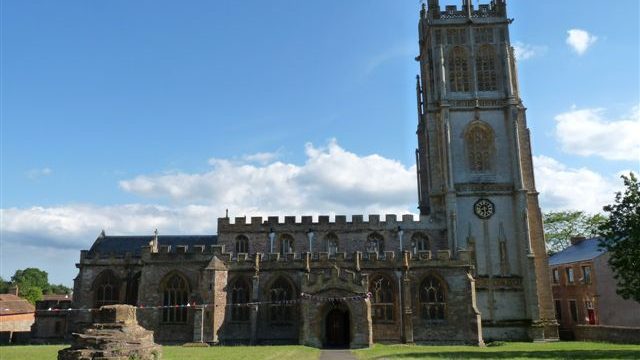(Updated January 3, 2022)
For 2022, I’ll be refreshing and republishing my series of short articles about the Sams of South Carolina and beyond.
I was inspired in 2019 by professional genealogist Amy Johnson Crow and her “52 ancestors in 52 weeks” project. I wrote the original “52 Sams in 52 Weeks” series back in “The Year We Paused” (i.e., 2020.) While they will form the basis for my 2022 effort, our knowledge about the Sams of South Carolina has continued to evolve. As a result, I already have a few new articles on my editorial calendar to throw in the mix this year.
Fresh Start
For week 1, the theme is Fresh Start. I’m going to use this as the theme for the grandparents of William Sams and his wife, Elizabeth Hext Sams.
Everyone has heard that William Sams and his wife Elizabeth Hext Sams bought Dataw Island in 1783. Both William’s paternal and maternal grandfathers emigrated from England to territory in or near “Charles Towne in the colony of Carolina” in the late 17th century. They both were seeking a fresh start, but their circumstances could not have been more different. Bonham Sams II came as an indentured servant; he’ll be the subject of this week’s article. Colonel John Barnwell was Irish, came from a long line of government officials, and was not an indentured servant. But more on him next week.
Bonham Sams II born in England in 1663
Bonham Sams II was born in North Petherton Parish, County of Somerset, England, in 1663. The photo above is of the church (15th century and still standing today) where he was baptized and where his parents and grandparents worshipped. In the South Carolina Historical Magazine (1963), Lula Sams Bond and Laura Sams Sanders write,
Bonham Sams, II, the progenitor of the Sams family of South Carolina, was baptized February 2, 1663, in St. Mary’s Parish Church, North Petherton Parish, County of Somerset, England, as “Bonham Sam, son of Thomas Sam” and his wife, Mary Bagge, also of this parish. He was the third generation of his family known to have worshiped here in the faith of the Established Church of England. In St. Mary’s ancient churchyard are buried his parents, also his grandparents—Bonham Samme, I, and his wife, Mary Shutte.
Bonum Sams married Enstis Blake about 1681. It’s unclear why they left England in 1682, other than seeking a better life elsewhere in the New World. Maybe due to religious strife, such as the run-up to the “Glorious Revolution” of 1688. However, there is ample evidence that King Charles II, who returned to England when the monarchy was restored in 1660, was willing to support colonists going to the New World. For example, 1682 is also when William Penn and his first settlers began arriving in Pennsylvania. They settled around Philadelphia at the junction of the Delaware and Schuylkill Rivers.
In any case, Bonham and Enstis left England. Imagine leaving home at the age of 19 and traveling for ten weeks by ship to a place that could justly be called a vast wilderness and was 4,000 miles away. Bonum was fortunate enough to marry the ship’s Captain’s niece. They traveled together on Captain Benjamin Blake’s ship to a few miles southeast of today’s Charleston. (Sometime after they arrived in the New World, “Bonham Sam” was changed to “Bonum Sams.”) The Captain established his settlement at “New Cut at the junction or meeting point of the Stono and Wadmalaw Rivers.” (Bond)
Life was tough. Bonum worked as an indentured servant for years to pay for their passage to North America. Like most European arrivals between 1630 and the American Revolution, he came voluntarily. But about half of these 450,000 Europeans who volunteered were indentured. During the indenture period, Bonum and Enstis were probably not paid cash wages but were provided food, accommodation, clothing, and training. It appears they were indentured to Benjamin Blake.
On September 13, 1694, Bonum received his first warrant for 100 acres of land that “he shall make choice of on account of arrival rights for himself and his wife, Enstis. . . .” This land, or an early grant, was on the banks of the Wadmalaw River and southeast of a bluff later “commonly called or distinguished by name of Sames Bluff.” (Bond) The earliest grant of record in his name, for 230 acres, is dated March 29, 1700, and the last two, for 170 and 200 acres, are both dated July 23, 1711.
Connection to William Sams (born April 18, 1741 – died January 16, 1798)
By 1711, Bonum Sams owned 600 acres on Wadmalaw Island, and he and Enstis had raised two sons (John and William) and a daughter (Mary.) Sadly, Enstis died about 1707. Bonum remarried to Elizabeth Brewton and had two more children: Robert Sams (born about 1707 – died 1760) and Elizabeth Sams (born before 1718 – died after 1743). This Robert Sams, married Bridget Barnwell (born after 1708 – died 1741.) “Our” William Sams, who bought Dataw Island in 1783, was their third son.
Robert Sams was a planter on Wadmalaw Island. We believe “Captain Sams Creek” on Seabrook Island is named after him. Lastly, I found this fact fascinating.
In 1732, Robert Sams was the first person given land (i.e., a land grant) on Hilton Head, in the recently formed royal colony of South Carolina, by the Royal Government in England. (Bond)

Source
The Sams Family of South Carolina, compiled by Lula Sams Bond and Laura Sams Sanders, published in The South Carolina Historical Magazine, Vol. 64, 1963
52Sams, Week_01, Bonum_Sams II (b1663 – d circa 1718)
Other sources recommended by the Dataw Historic Foundation.
WELCOME TO DATAW ISLAND – Historical charm. Natural beauty. Extraordinary living.
HISTORIC BEAUFORT FOUNDATION – Preserving Beaufort’s Past for the Future


